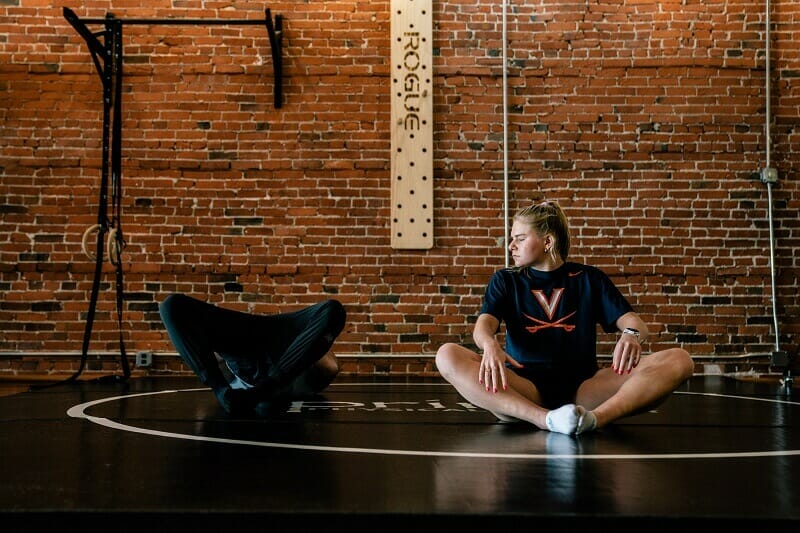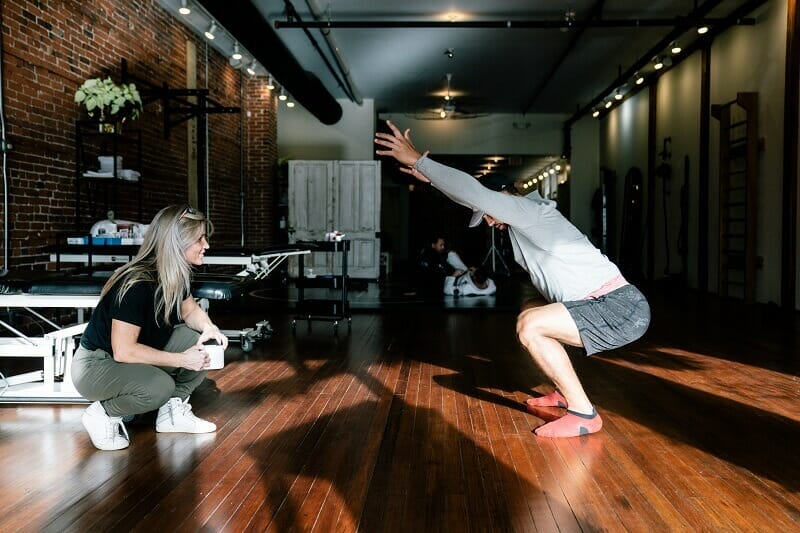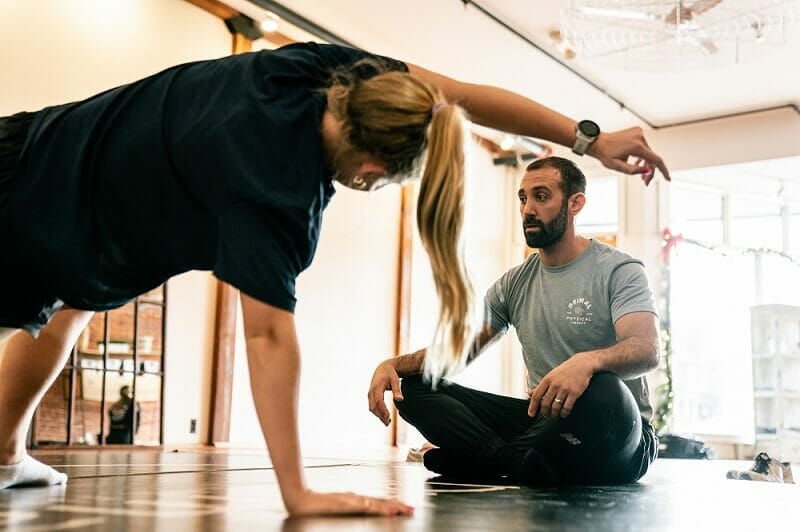Let’s admit it – we love our daily hustles because they keep us going, motivated, and productive. However, as we become too preoccupied with our daily activities, we stop considering our posture.
It is not until the pain sets in that we realize its importance to our overall well-being. But even worse, we would still keep going regardless of how uncomfortable we already are.
Neglected, poor posture can cause several physical, mental, and emotional health problems. And so, while it is still early, we must learn to correct how we carry ourselves and, most importantly, make physical therapy posture exercises part of our daily routines.
What is poor posture, and why should we be concerned about it?

Posture is how we position our bodies when sitting, standing, or lying down. We may experience poor posture when we feel pain and discomfort while maintaining a particular body position. It can be caused either by our body being asymmetrical or by holding our body incorrectly.
The effects of poor posture can include back pain, headaches, spinal impairment, joint degeneration, rounded shoulders, fatty stomachs, fatigue, and so forth. All of these can be treated and prevented.
How can physical therapy help improve your posture?

You can improve your posture by doing home physical therapy exercises to increase muscle strength and flexibility. However, these exercises will not always correct the underlying causes of your postural issues, especially if you’re not a professional.
If you’ve tried everything and nothing is helping, consider physical therapy. Regular exercises are a great start, but physical therapy can provide much more than exercises. A physical therapy treatment program uses exercises and stretches to improve our posture. A licensed physical therapist can help you improve your posture by strengthening weak muscles that cause slouching and misalignment.
Your therapist will create an individualized treatment plan that focuses on correcting any posture problems or painful conditions you have. The following are some exercises that the physical therapist may recommend:
- Plank Pose
- Chin Tucks
- Pectoralis Stretch
- Towel/Foam Roll Stretch
- Pilates Roll-Up/Yoga Sit-Up
- Stretching exercises to increase the flexibility of the head, neck, and shoulders
- Strengthening exercises that target the muscles that attach to the shoulder blades and core muscles
Physical therapists are the best people to help you with stretching and strengthening exercises because they are specially trained and understand how the human body moves. With their specialized education, physical therapists can help create a personalized treatment plan for your specific needs and problems.
Make an appointment with a physical therapist in your area today to help you find the best pain relief treatment method for you!
The best physical therapy exercises to correct posture
1. Thoracic Extension
Thoracic Extension helps to lengthen and strengthen the muscles in your upper back. It also improves your range of motion. Follow these simple steps to get started:
- Lay on your back on a mat or firm surface. (If you have a foam roller available, you may want to position that just below your shoulder blades)
- With your hands behind your head, gently pull your elbows back.
- Raise your chest off the ground, using your upper back muscles. Hold this position for a few seconds.
- Slowly lower yourself back down.
- Repeat this exercise 10-15 times.
2. Seated Row
The seated row is performed on a weight machine to strengthen the upper back muscles. Specifically, the seated row targets the upper back muscles, strengthens your shoulders, and improves your posture.
Follow these simple steps to get started:
- Sit on a bench or chair with your feet flat on the ground.
- Take hold of the edges of the seat.
- Lift your buttocks off the seat.
- Row your body forward, using your back muscles.
- Return to the starting position.
- Repeat this exercise 10-15 times.
3. Forward Lunge
Forward lunges are a fundamental lower-body exercise for lengthening the muscles in your hips and thighs and improving your balance and coordination. Once you’ve mastered the move, you can use it to build strength and muscle using nothing but your bodyweight or a pair of dumbbells for an added challenge.
Follow these simple steps to get started:
- Stand with your feet hip-width apart.
- Take a large step forward with your right foot, and lower your body until your right knee is bent at a 90-degree angle. Your left leg should be straight behind you.
- Return to the starting position.
- Repeat this exercise 10-15 times on each side.
4. Superman
The superman exercise is an efficient and effective exercise that targets the lower back, glutes, hamstrings, and abdominal muscles. It complements exercises such as leg raises and sit-ups that primarily target the abdominal muscles in the front of the body.
Follow these simple steps to get started:
- Lay face down on a mat or firm surface.
- Raise your arms and legs off the ground, and hold this position for a few seconds.
- Return to the starting position.
- Repeat this exercise 10-15 times.
5. Shoulder Retraction
Scapular retractions are exercises where you pull your shoulder blades together toward your spine. It helps improve your posture, which can help with various issues such as back and shoulder pain.
Follow these simple steps to get started:
- Stand with your feet hip-width apart.
- Squeeze your shoulder blades together and retract your shoulders.
- Hold this position for a few seconds, and then release it.
- Repeat this exercise 10-15 times.
6. Cat-Cow
The cat and cow pose opens the chest and lungs and stretches the lower back, hips, and core muscles. It makes you more flexible, takes stress off your upper back and neck, and strengthens your spine.
Follow these simple steps to get started:
- Get yourself in a stable position with your hands and knees shoulder-width apart.
- As you exhale, round your back and tuck your chin to your chest. (This is the cat position).
- As you inhale, arch your back and look up to the ceiling. (This is the cow position).
- Repeat this exercise 10-15 times.
How to practice good posture every day

Poor lifestyle can also cause poor posture. For instance, hunching over laptops and cellphones strains the spine, resulting in back and neck pain, fatigue, and muscle strain. But you can practice good posture any time, whether lying in bed, standing at the grocery store, or sitting at your desk. Keeping your spine aligned is also an important reason.
You can do the following good practices in the comfort of your home, room, or office. Follow these simple tips:
- Stand up straight. Imagine a string pulling our head up towards the sky when we stand up. This will help us maintain a good spine alignment.
- Don’t slouch. Slouching puts unnecessary stress on our back and neck, leading to long-term health problems. Let us make a conscious effort to keep our shoulders back and our chests open.
- Use a monitor stand. If we are working all day in front of a computer, use a monitor stand that supports our body position when facing the monitor. This will help keep our screen at eye level and prevent us from hunching over.
- Exercise regularly. Exercise helps us strengthen the muscles that support good posture and release tension in our joints and muscles. Make sure to include some exercises that focus on strengthening our back muscles.
- Take breaks often. When sitting for more prolonged periods, taking breaks every 20 minutes is best to move around and stretch out our muscles, which will help keep them from getting stiff and tense.
- Be aware of your posture. Pay attention to your sitting, standing, and moving throughout the day. The more aware you are of your posture, the easier it will be to correct it.
- Get a posture corrector. Wearing a posture corrector can help remind you to maintain good posture throughout the day, and it can also help train your muscles to support good posture.
Key Takeaways
No matter how busy our daily lives could get, that doesn’t mean we should ignore our physical health. Having good posture is more than just looking good; it helps you to develop strength, flexibility, and balance in your body.
Posture can be improved or corrected with physical therapy in Haverford before it worsens. It can also be improved by regularly performing simple stretching exercises in the comfort of your own home or office. So, let’s make it a part of our routine to carry ourselves properly because its benefits can be life-changing.
Thanks for reading!